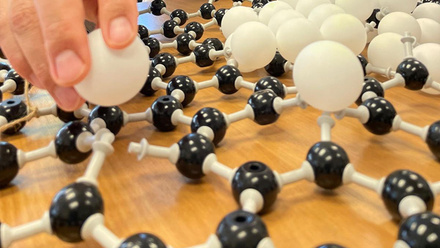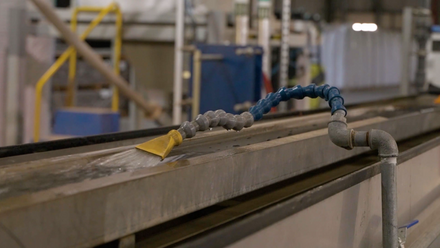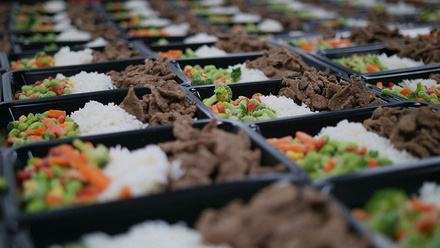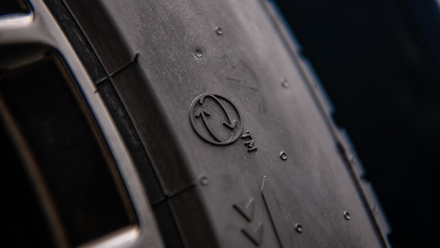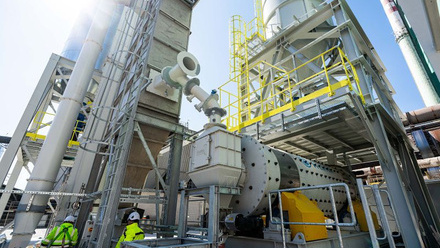Driving through alternatives for steering wheel composites
Steering wheels made using natural fibres, bio-based resin systems and recycled content have been developed at the University of Leeds and the National Composites Centre (NCC), UK.
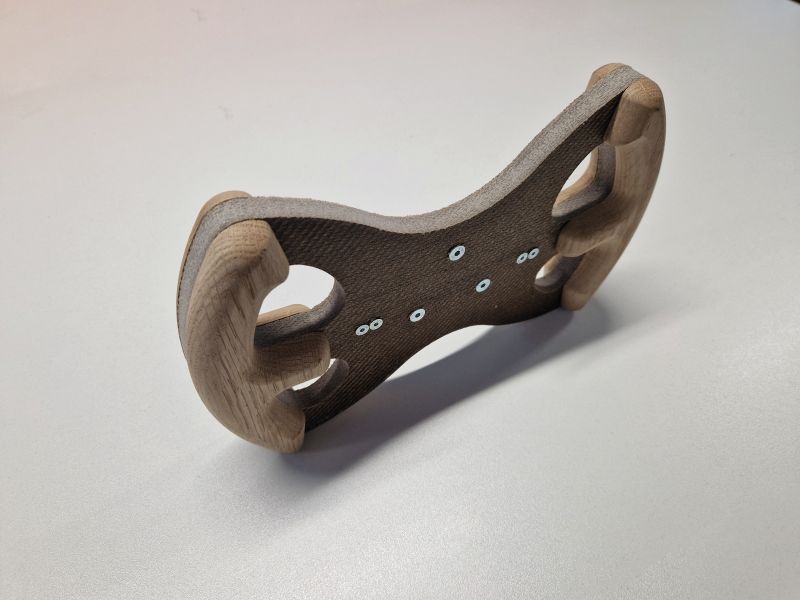
The challenge was to manufacture a more sustainable steering wheel for a Ginetta LMP3 sportscar. This was to support Waste2Race, aimed at building a hydrogen-powered car, led by WMG at the University of Warwick, UK.
Using Life Cycle Assessment (LCA), the project measured and analysed the impact of three, novel, steering-wheel concepts.
The three prototypes deploy an all-cellulose composite (ACC) made from flax fibre for the reinforcement and matrix, flax combined with polylactic acid, and waste denim infused with epoxy. Each prototype features oak handles, replacing the original polyurethane foam of the Ginetta steering wheel.
The LCA revealed the prototypes achieved a 25-43% reduction in global warming potential (GWP) compared to the carbon fibre baseline.
The denim-infused epoxy wheel reduced GWP by 21% compared to the aluminium baseline – assuming the oak handles contribute 0kg CO2e/kg. Design modifications were implemented to maintain structural stiffness comparable to traditional materials.
Michael Ries, from the University of Leeds, went into detail on the ACC design. He shares how Dr Peter Hine, also at Leeds, was part of a team who previously developed a method of making single-polymer composites using selective melting. Here, heat was used to melt the surfaces of the individual polymer elements, which, on cooling, formed the matrix of the single-polymer composite.
Ries says, 'This material was licensed and has found a successful application in some of Samsonite’s suitcase ranges. We developed a similar method, but as cellulose does not melt, a dissolution process is required, where instead of selective melting we use selective dissolution. The outer parts of the fibres are dissolved, leaving the inner part of the fibres undissolved. The dissolved fraction becomes the matrix that then embeds the undissolved fibre portion.'
An ionic liquid is used to partially dissolve the surfaces of each cellulosic element. These surfaces then coagulate in water to form a matrix phase bonding the structure together. A final drying stage removes the water, and a composite sheet is formed.
The final composite material can be made from pure hemp, cotton, flax or lyocell. There is no epoxy, no resin and no glue. In this steering wheel example, Ries says, 'We used a technical fabric woven from flax-fibre yarn.'
He explains that, as it is made from 'one component, [there is] excellent stress transfer between the fibre and matrix as they are chemically identical. And at end of life, ease of recycling as no separation of components is required.'
Ries says the challenge was to make a thick composite, ~1.6cm, which required 16 layers of flax fabric. Previously they had only made 0.3mm composites. 'The NCC then took the thick composite we had made, and using a water jet, cut it to the required shape. The biggest challenge was to prevent bowing of the final sample, as when you have so many layers this tendency becomes exaggerated. This was countered by symmetric stacking of the layers (warp/weft).'
They have sketches on how to upscale the manufacturing process from batch to continuous and are requesting funding to enable NCC to carry out this work.
Ries asserts, 'Cellulose is the most abundant biopolymer on the planet and can be found in textile and agricultural waste. This means the composites can be formed from waste or recycled materials. There is no material reliance on fossil fuels, instead we are using nature-sequestered CO2. The production process is low energy, and we don’t use any volatile solvents.'
He continues, 'The materials themselves could form part of a circular economy, as we have demonstrated the composites can be made back into fibres, which then can be made back into fabric, which can then be made back into composites.'
The team says the use of LCA practices enables manufacturers to make data-driven decisions about material selection and process optimisation.
The NCC will next focus on geometry optimisation to enhance strength in high-load areas while reducing mass, progressing toward a fully functional, lightweight steering wheel.
The ACC wheel reportedly measured a tensile modulus of 4-7GPa and 90-120MPa strength. Continued testing will explore real-world functionality, potentially allowing adoption in mainstream manufacturing for cross-sector applications.


